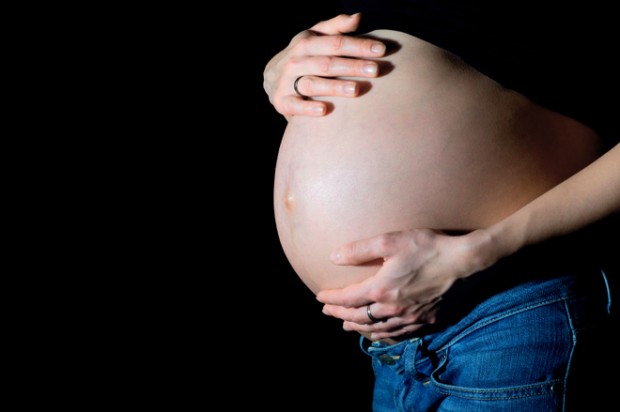Here’s a quick medical quiz: What’s the most common reason for hospitalization in the United States? Take a stab. Respiratory distress? Cardiac arrest?
Try childbirth. As researchers at the University of Minnesota’s School of Public Health observe, more than four million babies are born in American hospitals every year, and from maternal checkups to newborn care, moms-to-be rack up more charges than any other patients. In 2009, those costs totaled nearly $30 billion.
Maternal health care is a big burden on Medicaid, which pays the expenses of low-income patients and annually foots the bill for 45 percent of all births. What’s more, low-income moms have disproportionately high rates of complication and Caesarean section. According to the Minnesota researchers, Medicaid mothers are more likely to give birth prematurely, or to low-weight babies, than more affluent women.
Writing this month in the American Journal of Public Health, Katy Backes Kozhimannil and her colleagues propose a novel way to reduce birth complications and bring down maternal Medicaid costs at the same time: use doulas.
Unlike an obstetrician or delivery nurse, a doula — from the Ancient Greek term for “female servant” — possesses no formal medical training (which also differentiates her from a midwife). Instead, she’s on hand during labor to provide counsel and emotional support to mothers and their partners, not unlike a coach on the sidelines of a tennis match or a guide leading a first-time climber up a mountain. In addition to serving as a mother’s advocate in the delivery room, doulas also provide pre- and post-partum advice on homebirth, nursing and infant well-being. In an age of high-tech medicine and mommy blogs, a doula fills a rather more traditional cultural role: She’s a confidant, a mentor, a hand to hold in the worst of labor pains.
A 2011 Cochrane Review looked at 21 studies involving 15,000 pregnancies and found that women who were provided a doula’s “continuous support” during childbirth experienced shorter labors, fewer Caesarians and were less likely to require the use of instruments — forceps, vacuums — or epidural drugs. “Continuous support during labour has clinically meaningful benefits for women and infants and no known harm,” the review concluded. “All women should have support throughout labour and birth.”
Unfortunately, all women don’t. “The women who stand to benefit the most from doula care have the least access to it — both financially and culturally,” Kozhimannil notes. “Most doulas are white middle-class women serving white middle-class women.” And because few private insurers cover a doula’s services, any woman who wants one in the delivery room is forced to pay for the care — often $400 to $800 — out-of-pocket.
Kozhimannil wondered if state Medicaid programs might actually reap long-term cost savings by providing their poor patients with doulas, thus avoiding the astronomical hospital bills associated with premature labor, Caesarean section and neonatal intensive care. (At the moment, just five states allow public funds to pay for labor coaches, according to the Kaiser Family Foundation.) If doulas really did decrease the risk of complicated pregnancies, it would make sense to invest in their services up front, in the same way that it’s cheaper for an insurer to pay for a customer’s gym membership now than to treat her diabetes later.
Everyday Miracles is a Minneapolis non-profit that provides Spanish- and Somali-speaking doulas to mothers on Medicaid — precisely the kind of women that Kozhimannil argues most need their support. The organization’s 22 doulas assisted more than 1,000 births between 2010 and 2012, so Kozhimannil compared their outcomes with 280,000 Medicaid-funded births, presumably few of which were doula-assisted. She found that, as was predicted, Everyday Miracle mothers had 30 percent fewer Caesarean sections than regular Medicaid mothers.
Kozhimannil then projected how much states might save were doulas able to lower C-section rate among all low-income moms as much as they had among Everyday Miracle moms. (According to the University of Minnesota, the average Medicaid payment is about $9,000 for a vaginal birth, but it is significantly higher — $13,600 — for a Caesarean delivery.) Assuming Medicaid could negotiate a standard $200 fee for doula birth services, most states would save at least $2 million a year, and the average would cut costs by $7 million. Populous states stand to see an even bigger windfall: With fewer surgical births, California alone might recoup some $200 million in obstetrics costs.
In the end, of course, it’s about more than money. For low-income expectant mothers and their infants, the stakes are so much higher. But if economic logic is what’s required to compel state governments to act, well, that’s good medicine of a different sort.


